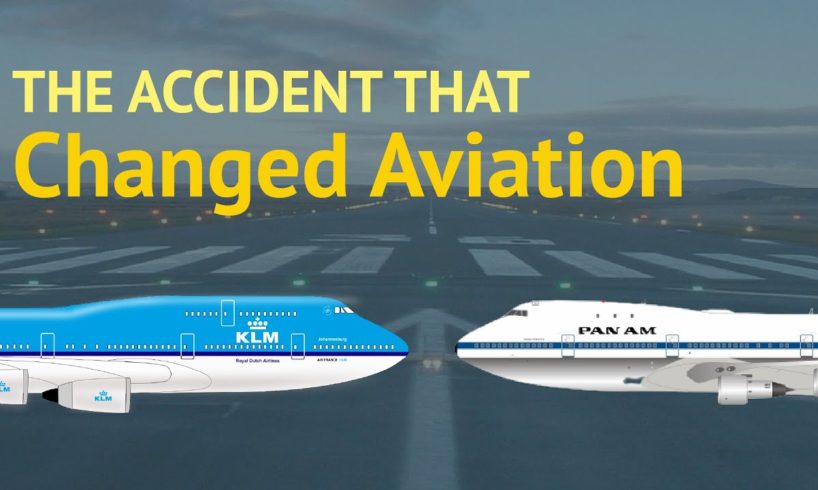
On March 27, 1977, KLM flight 4805 departs Schipol Airport, in Amsterdam, with 3 pilots: Captain Jacob Veldhuyzen van Zanten, first officer Klaas Meurs and flight engineer Willem Schreuder. With Gran Canaria as their main destination, they receive information of a terrorist attack and they are forced to divert to Los Rodeos airport (Tenerife North). Another flight that joined them was Pan Am flight 1736, which were on a flight from Los Angeles to Gran Canaria with a stop at New York. The 3 pilots on board were Captain Victor Grubbs, First Officer Robert Bragg and Flight Engineer George Warns.
Eventually Gran Canaria reopened so both flights began preparations for the short hop to Gran Canaria. The first flight to depart was KLM 747, who were instructed to taxi down runway 12 and make a 180º turn to line up onto runway 30. This procedure is also known as a runway backtrack. The Pan Am 747 would then follow the KLM aircraft onto the runway, and exit via taxiway C3, and use the parallel taxiway to taxi to the runway.
However, as the Pan Am pilots entered the runway, the visibility turned from 500 meters to 100 meters. As they were taxiing, they were unsure as to whether the controller had said C1 or C3 and were then struggling to identify the exit through the thick and dense fog. At this stage, neither of the jumbo jets can see each other and the air traffic controller had no idea of the series of events that were about to unfold.
As the KLM aircraft lined up, the captain began applying take-off power, before realising that they did not have a clearance. The pilots and air traffic control exchanged communications regarding the clearance, and were then told to standby for the take-off clearance. This last message was never received (due to interference), and the KLM aircraft began rolling for take-off. Soon after, the controller asks the Pan Am crew to call when they have cleared the runway. The flight engineer on the KLM 747 hears this and raises the alarm with the Captain, who immediately dismisses him.
Seconds from collision, the Pan Am aircraft identifies the 747 through the fog and makes a desperate attempt to get off the runway as quickly as possible. Meanwhile the KLM aircraft attempts to perform an early rotation, causing a tailstrike for a distance of 20 meters and only just gets into the air. The aircraft nose clears the Pan Am aircraft but the right engines slam onto the forward part of the fuselage, just behind the cockpit. The main gear hits the center of the fuselage while the left engines destroy the empennage. The KLM aircraft manages to take-off for a moment but it becomes completely unflyable and crashes 150 meters later and slides down 300 meters of runway.
The aircraft, filled to the brim with fuel, almost instantly ignites. All 248 passengers and crew in the KLM aircraft and 335 passengers in the Pan Am aircraft perish. 61 people on the Pan Am aircraft, including the flight crew, manage to survive, escaping through the left wing of the aircraft and openings on the fuselage. The visibility from the tower was very poor, so the air traffic controller had no idea of what had just happened, and could only hear two explosions, one after the other.
A massive investigation quickly got under way involving all three countries involved as well as both airlines, revealing the sequence of events that led to this disaster.
Credits:
KLM 747 taking off – Aviation NZ
Gran Canaria Airport, Flickr – Stefan Ekström
Airport footage, Creative Commons – g4shf
747-400 Cabin from Row 60, Flickr – Paulo O
KC-130J footage, Creative Commons – USMCairAFG
Performance graph, 747SP Airplane Characteristics document – Boeing
Simulator 737-800 flight, Creative Commons – Emmanuel Chaligné
United Airlines 757 Takeoff, Creative Commons – PDX Aviation
Heathrow aircraft time-lapse landing, Creative Commons – Cargospotter
Pan Am 747-121, Flickr – clipperarctic
Ground radar station, Creative Commons – Ynterstella
747 CAT IIIB landing, The Pilot Channel
Final Report – Netherlands Aviation Safety Board
747 explosion photo – David Alexander – https://www.amazon.co.uk/Never-Wait-Fire-Truck-Deadliest/dp/0692471871
source






